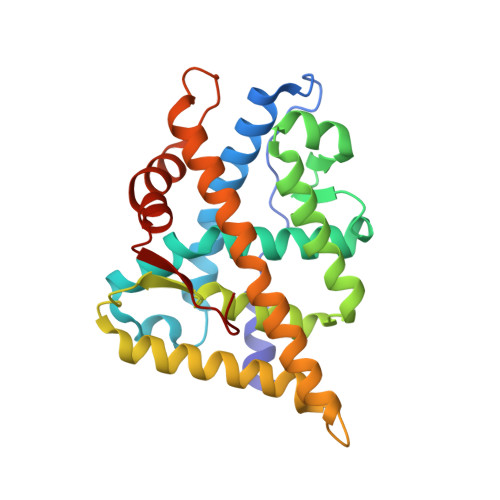Inhibitors of Androgen Receptor Activation Function-2 (Af2) Site Identified Through Virtual Screening.
Axerio-Cilies, P., Lack, N.A., Nayana, M.R., Chan, K.H., Yeung, A., Leblanc, E., Guns, E.S., Rennie, P.S., Cherkasov, A.(2011) J Med Chem 54: 6197
- PubMed: 21846139
- DOI: https://doi.org/10.1021/jm200532b
- Primary Citation of Related Structures:
2YHD - PubMed Abstract:
The androgen receptor (AR) is one of the most studied drug targets for the treatment of prostate cancer. However, all current anti-androgens directly interact with the AR at the androgen binding site, which is prone to resistant mutations, calling for new strategies of the AR inhibition. The current study represents the first attempt to use virtual screening to identify inhibitors of activation function-2 (AF2) of the human AR. By combining large-scale docking with experimental approaches, we were able to identify several small molecules that interact with the AF2 and effectively prevent the transcriptional activation of the AR. The crystallographic structure of one of these inhibitors in complex with the AR provides critical insight into the corresponding protein-ligand interactions and suitable for future hit optimization. Taken together, our results provide a promising ground for development of novel anti-androgens that can help to address the problem of drug resistance in prostate cancer.
- Vancouver Prostate Centre, University of British Columbia, 2660 Oak Street, Vancouver, British Columbia V6H 3Z6, Canada.
Organizational Affiliation:



















